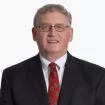Seyfarth Synopsis: Occupational noise exposure is common in certain industries across the United States, such as construction, manufacturing, and even warehousing and logistics. According to OSHA, the "Center for Disease Control (CDC) estimates that 22 million workers are exposed to potentially damaging noise at work each year."
Many industries conduct activities that may require an employer to evaluate occupational noise exposure and potentially implement an occupational noise monitoring, conservation, and mitigation program. Regulations in General Industry (29 CFR 1910.95) and Construction (29 CFR 1926.52 and 29 CFR 1926.101) govern if, when, and how to address occupational noise exposure in the workplace.
OSHA requires
employers to implement a hearing conservation program when noise exposure is at or above 85 decibels averaged over 8 working hours, or an 8-hour time-weighted average (TWA). Hearing conservation programs strive to prevent initial occupational hearing loss, preserve and protect remaining hearing, and equip workers with the knowledge and hearing protection devices necessary to safeguard themselves.
OSHA explains that the following can be an indication that noise may be an issue in the workplace if employees:
- Hear ringing or humming in their ears when they leave work.
- Have to shout to be heard by a coworker an arm's length away.
- Experience temporary hearing loss after leaving work.
According to OSHA, employers can protect their workers from excessive noise and prevent hearing damage by using "quieter machines, isolating the noise source, limiting worker exposure, or using use effective protective equipment" that can modulate noise below certain thresholds.
Another tool both employers and workers can use to combat workplace exposure to excessive noise is NIOSH's Sound Level Meter App, which measures workplace sound levels. The app can help reduce occupational noise-related hearing loss by providing guidance to allow stakeholders to make informed decisions about exposures.
Employers should also be aware that employees with hearing loss can still be effective and safe workers. In a January 26, 2023 article in its Safety+Health Magazine, the National Safety Council points to recently-updated materials from the EEOC explaining that "[a]lthough some employers may incorrectly assume otherwise, people with hearing disabilities can be safe and effective workers."
EEOC guidance, "Deafness and Hearing Impairments in the Workplace and the Americans with Disabilities Act," provides background information and a Q&A on applying the Americans with Disabilities Act of 1990 to job applicants and employees with hearing disabilities, including:
- when an employer may ask an applicant or employee questions about his hearing impairment and how it should treat voluntary disclosures;
- what types of reasonable accommodations employees with hearing disabilities may need;
- how an employer should handle safety concerns about applicants and employees with hearing disabilities; and
- how an employer can ensure that no employee is harassed because of a hearing disability or any other disability.
Employers should work with qualified outside counsel to ensure that they have completed required noise surveys and, if necessary, have an appropriate audiometric testing and hearing conservation program in place.
The content of this article is intended to provide a general guide to the subject matter. Specialist advice should be sought about your specific circumstances.
We operate a free-to-view policy, asking only that you register in order to read all of our content. Please login or register to view the rest of this article.







